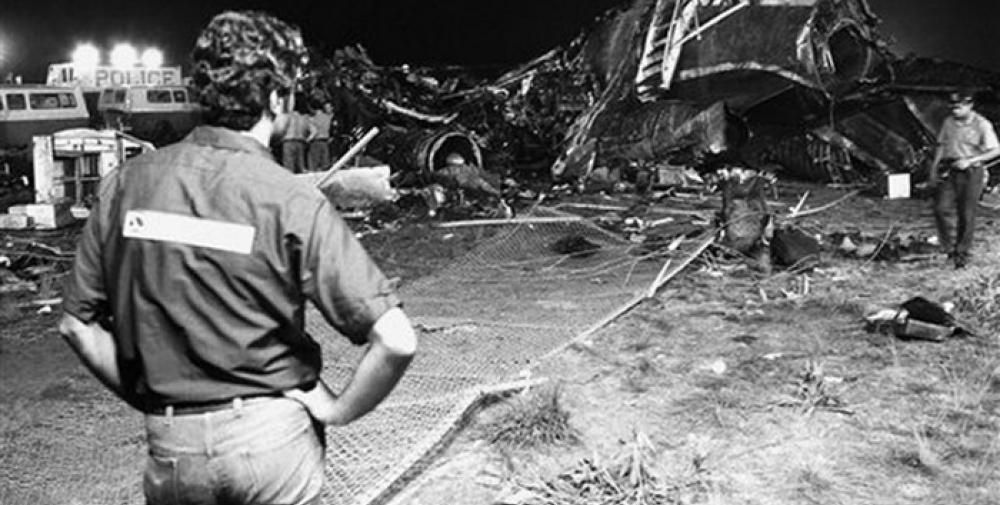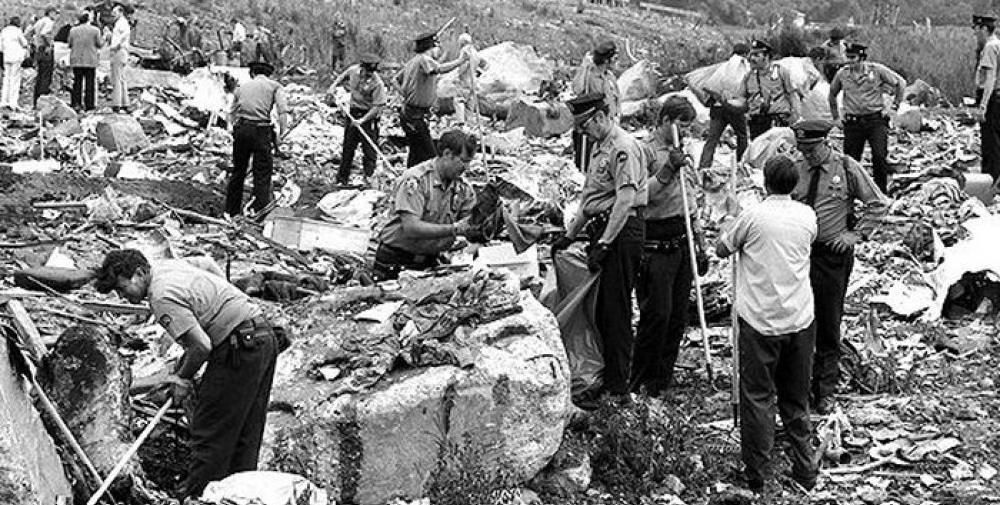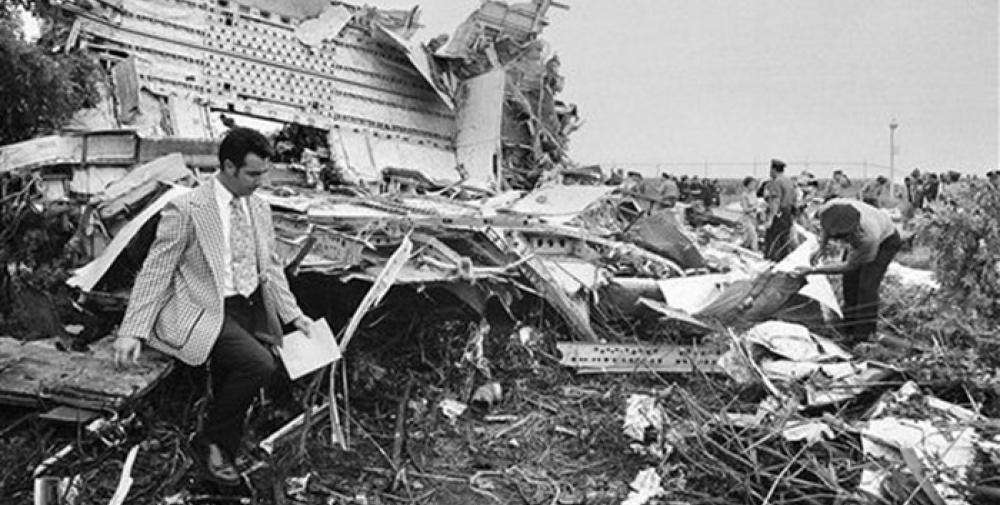It was Tuesday, June 24th, 1975. Eastern Air Lines Flight 66 took off at 13:19 local time from New Orleans, bound for New York. The Boeing 727-200 had 116 passengers onboard, including an American basketball player, a bishop from Louisana, and 17 Norwegian sailors who had left their ship in New Orleans and were heading home.
The crew
The captain was John W. Kleven, and the first officer was William Eberhart. Flight engineers Gary M. Geurin and Peter J. McCullough were also on the flight deck. The senior flight attendant was Maureen Davis, who was working at the front of the aircraft with flight attendant Jackie Lindsay. Mary Ellen Mooney was working at the rear with Robert Hoefler.
Heading into the storm
The flight had thus far been normal and uneventful. The flight attendants had finished service and were preparing to land. There was a severe thunderstorm at John F. Kennedy Airport as the flight approached the area. At 15:35, the flight crew contacted the JFK approach controller, and he gave them the approach pattern for runway 22L. At 15:52, the approach controller warned all aircraft that the airport had light rain showers, haze, and zero visibility. He told them they must land using instrument flight rules.
At 15:53, the flight was switched to another frequency, and the controller sent radar vectors to them to operate around the thunderstorms and sequence them into the landing pattern. The flight crew checked the weather at LaGuardia, the alternate airport, to find the weather was the same. One of the flight crew commented, “…one more hour and we’d come down whether we wanted to or not'”.
The controller reported a ‘severe wind shift’ on the final approach at 15:59. Asking for a different runway would cause a 30-minute delay, and Flight 66 was running low on fuel. At 16:02, the flight crew contacted the tower for landing clearance. Three minutes later, the aircraft entered a microburst and wind shear caused by the thunderstorms and continued its descent. It was raining heavily, and the flight crew was focused on their final checklist.
Minutes before
At 15:55, a Douglas DC-8 operated by Flying Tiger Line flight 161 was on the final approach when a downdraft slammed the aircraft from above. The captain moved the throttles forward to take off power, but it barely moved. He wanted to do a go-around but could not, so he had no choice but to land. They touched down hard, and the crew were shaken but uninjured. The aircraft was carrying cattle, and the landing was so hard they broke their legs and had to be put down. The captain reported ‘tremendous wind shear’ and told the tower again, but the controller did not respond.
Just after, at 15:57, an Eastern Air Lines Lockheed L-1011 flight 902 experienced wind shear and just managed a go-around. Against the downdraft, they barely climbed and just missed the approach lighting pier.
They reported the wind shear conditions to the tower. A Finnair DC-8 aircraft and a small Beechcraft Baron had managed to land safely. All aircraft reported a loss of airspeed and increased rates of descent. The captain of Flight 66 was aware of the reports of severe wind shear but still continued with the landing. He thought that the reports of wind shear were exaggerated. The first officer realized something was very wrong and tried to go around, but it was too late.
The approach had felt normal, and the flight attendants reported no turbulence. Mary was thrown up and forward. She saw the cabin emergency lights illuminate and the oxygen masks drop.
” My first recollection is that the plane rolled to the left and full thrust power was applied…We lifted, then we leveled out and hit. It felt like we were going over a rocky road.”
Mary, flight attendant as told to the New York Times
“I felt the plane vibrate back and forth real fast. At first I thought it was a bad landing. Then I realized it was more than that.”
Robert, flight attendant as told to the New York Times
What happened next?
The wind shear pushed the aircraft into the ground. The left wing struck an approach light tower 2,400 feet from the runway threshold. The aircraft struck another five towers, ripping the aircraft apart. The wing disintegrated, and the aircraft banked to the left and burst into flames. It skidded across the road with the remaining fuselage upside down, coming to a rest in sand and weeds. The tail landed in a muddy field. The twisted wreckage was scattered along Rockaway Boulevard to the northeast perimeter of the airport. It was early in the rush hour, and luckily, no vehicles were struck.
The rescue workers were fast to the scene, and the fire was extinguished quickly. It was raining heavily, and there was thunder and lightning. Bodies were strewn around among suitcases, personal belongings, seats, and debris. The impact had been severe, and most of the fuselage had disintegrated. The rescue workers had the grim task of collecting the remains. There was burnt flesh and mutilated body parts. A makeshift morgue was set up so that medical examiners could try and identify the remains.
“I found myself upside down in my seat next to Bob. We were hanging by our seatbelts. The engine had already fallen off the plane and it seemed to have broken up into pieces. When we hit the ground, I thought it was the end of the world. It was deathly quiet. Then we heard the explosion and saw fire.”
Mary, flight attendant as told to the New York Daily News
The aftermath
Robert and Mary, who were seated at the back, escaped through the exit doors, emerging to a scene of devastation. A police officer asked Robert if there were any survivors, but he was too shocked to answer. There were 12 survivors in total (one of whom died later in the hospital) who were seated at the back and were ejected, still in their seats, from the aircraft.
113 people died, including the flight crew and two flight attendants, Maureen and Jackie.
Robert and Mary were taken to the hospital with fractures, bruises, cuts, and internal injuries caused by the seatbelt. The accident taught many lessons about hazardous weather conditions, and it led to the development of wind shear detection equipment.
The cause of the accident was wind shear and the mircoburst and the failure of the airport and flight crew to recognize severe weather hazards.
Amazingly, Mary returned to her job in August of the same year.
” We both hobbled away from the crash and then we heard an explosion. I can’t believe the plane caught fire so fast. I feel badly that we couldn’t help the passengers. It happened so fast. We looked for other people. It seemed we were right on the highway. We could see cars passing by.”
Mary, flight attendant as told to the New York Daily News
Sources: NTSB Report, The New York Times, Aviation Safety Network, Playground Daily News, New York Daily News, Admiral Cloudberg, Bureau of Aircraft Accidents Archives, FAA.






